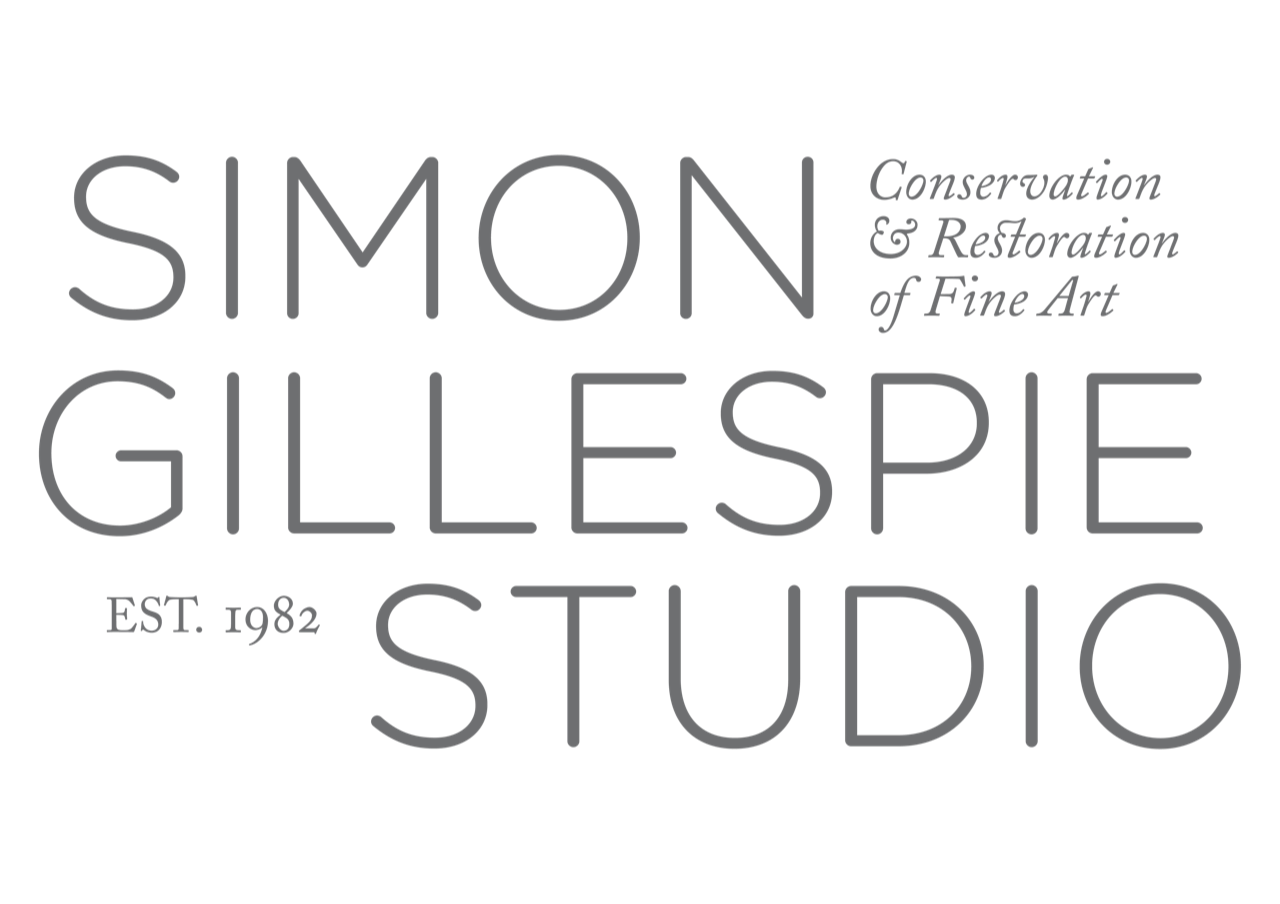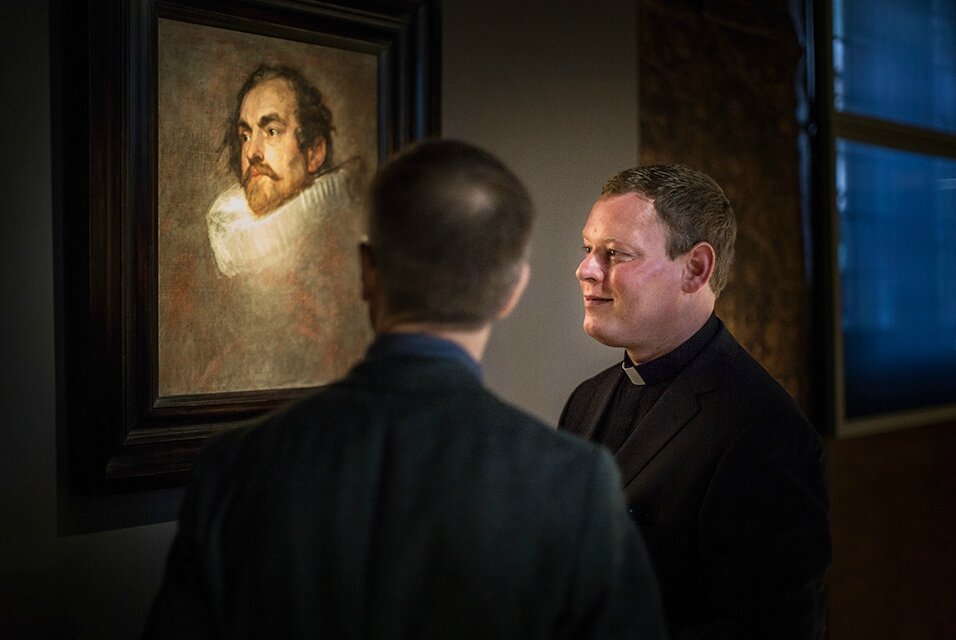Portrait of Olivia Boteler Porter by Sir Anthony van Dyck
This portrait was formerly thought to represent Queen Henrietta Maria, but is in fact of her lady-in-waiting, and painted by the great court portraitist Anthony van Dyck
Before treatment
After treatment
This picture had been in the Bowes collection since the museum opened in 1892, where it had languished unseen and overlooked due to its poor condition.
The founders of the museum, John and Josephine Bowes, had bought the picture in Paris for 45 francs; it was described as being ‘in the style of van Dyck’.
Dr Bendor Grosvenor came across a photograph of the painting while looking through the Art UK website.
The first step was to show that the picture could have been painted during the time of van Dyck. The picture was taken to Libby Sheldon, art historian at University College London, whose work on the pigments used in the paint proved the picture dated from the 17th century, ruling out the possibility it was a later copy. This was a major breakthrough, as van Dyck’s style was emulated by artists for centuries after his death.
Meanwhile, Bendor carried out research to try to identify the sitter. He suggested she might be Olivia Boteler Porter, the queen’s lady-in-waiting and wife of van Dyck’s friend and patron, Endymion Porter, whom she married in 1619. Olive was the daughter of Sir John Boteler and Elizabeth Villiers, niece of the Duke of Buckingham. While in England, van Dyck painted a number of portraits of members of the family. Confirmation came after Bendor got in touch with Olive’s descendants, who showed him another portrait of her – and the two matched. The red carnation in her hair might be a heraldic motif, since it appears in other images of female members of the Villiers family.
Simon Gillespie was then engaged to remove the dirt and old varnish from the picture and restore Olivia to her former glory. Bendor describes the process on his blog:
“At first sight, the picture looked a bit of a mess, and it was easy to see why it had been passed over as a copy for many years. One of the most disfiguring aspects of the portrait was the sitter's left eye, which did not seem to point in the right direction. With a portrait, small damages in a face can make the viewer question the whole image. We tend to look at portraits almost as human faces - and if the eyes are wonky, we assume that the whole portrait must be, in effect, also wonky.
However, as is often the case with condition issues, things looked worse than they in fact were. The wonky eye in question, which at first I thought had been over-painted, was merely missing a dark glaze over the pupil, and a tiny white highlight. Both of these had been cleaned off in a previous campaign of over-zealous restoration. Delicate glazes and pigments like those in an eye on a portrait can be easy to accidentally remove. Possibly, this was done centuries ago, for cleaning pictures used to be the job of the house keeper. Sliced potatoes, stale urine, and worse were used to wipe down paintings, sometimes with disastrous consequences. Wipe too vigorously, off comes a highlight, and suddenly an eye loses its direction.
Elsewhere in the picture, it was the usual story of old layers of dirt and varnish making the paint strokes and colours unreadable. There were also a few holes and some areas of abrasion. Although the picture had been over-cleaned it had not (and this is most unusual) been 'restored'. That is, there were no layers of old over-paint covering the losses and holes. Often, areas of old over-paint can be very hard to remove, especially if applied in oil. Even more fortunately, the picture was unlined, which meant that the original surface of the canvas was actually in excellent condition. I don't recall dealing with an un-lined Van Dyck before. Consequently, the paint layers had not been pressed or flattened in an old lining process (they used to use hot irons to bond the two canvases together, therefore melting and flattening the paint), and all the impasto was just as the artist had intended it. The picture had a fine texture, especially in the drapery. So despite appearances, the painting was in relatively good condition.
There was, however, one area where it had been dramatically altered by a later intervention, and this was in the curious grey, oval additions at the top and bottom. I've not seen these on a Van Dyck before, and again they must have been another reason to doubt the painting in the past. It was fairly easy to see that the edges were additions, especially at the bottom of the picture, as the remains of the sitter's sleeves were visible beneath the later paint. Our paint analysis also confirmed that, at the top, the grey background extended underneath the oval, and so we could safely rule out any question of the oval being original to the picture. In the past, it was not uncommon for owners to add ovals like this if a portrait was intended to be hung as part of a decorative set, perhaps in an architectural feature. When we cleaned the picture, it was decided to leave the oval additions on. It might have been possible to remove them, but they formed part of the picture's history.
Cleaning the picture was a delicate but enjoyable experience. I was lucky that the Bowes Museum entrusted the picture to our care, and we were able, with Simon Gillespie's help, to use all our experience of conserving Van Dycks (over 20 so far, and many more studio works) to full advantage. Unless you really know what you're dealing with, cleaning Van Dycks can be a fraught business, given the extremely complex and delicate glazes he used. It is very easy to get things wrong, especially in areas with darker pigments like the hair.
{…} After the cleaning, there was some re-touching required, for example in areas of abrasion in the drapery, and most notably in the sitter's left eye, where a highlight was replaced.”
Finally, after weeks of painstaking restoration work, the painting was shown to Dr Christopher Brown, director of the Ashmolean Museum in Oxford, and the country’s leading authority on van Dyck. Describing the work as elegant, Dr Brown said: “This absolutely is van Dyck at his best. It is a substantial discovery.”
The Museum’s Principal Keeper, Jane Whittaker, said: “A sympathetic programme of conservation has removed the disfiguring varnish layers, revealing the tonal subtleties of the sitter’s skin and her white satin dress, together with the quality of the drawing.”
The Portrait of Olivia Boteler Porter is no longer languishing unloved in the Bowes Museum’s store but is now a front-of-house star.
A new frame was sought. You can read about the process of designing the frame in this fascinating article.
Publications: Barnes, S., Van Dyck: A Complete Catalogue of the Paintings, New Haven, 2004, p. 578.
Read more here:
https://www.darlingtonandstocktontimes.co.uk/news/10308471.art-treasure-that-was-hidden-beneath-years-of-dirt/
https://www.theguardian.com/artanddesign/2013/mar/09/van-dyck-olivia-boteler-porter
https://www.thebowesmuseum.org.uk/Collection/Explore-The-Collection/By-Collection/Van-Dyck-Discovery
We have worked on a number of artworks by van Dyck: read about a preparatory sketch for The Magistrates of Brussels and a preparatory sketch for The Betrayal of Christ






